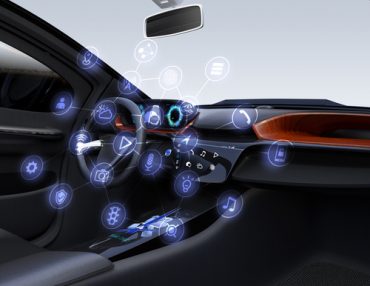
Worldwide, scientists and government agencies are using AI technology and real-time analytics to study, track, and plan actions related to COVID-19.
Artificial intelligence (AI) and real-time analytics are playing a significant role in the fight against the coronavirus. Follow our COVID-19 coverage as we look at a sampling of the leading international efforts to gain insights into the genomic nature of the virus, study its spread, and predict future infections.
The first place to look is in our weekly real-time analytics news roundup articles. Many of the items in each week’s roundup are COVID-19-related.
Additionally, you can find more in-depth coverage in our COVID-19 news and analysis articles, including:
Using Artificial Intelligence to Manage the Coronavirus Pandemic
Approximately 90 percent of people that are infected with coronavirus have no or very mild symptoms, they should be able to go back to work and develop herd immunity to the virus. Employing big data and AI prediction models could accelerate the de-confinement process by assessing each person on a risk scale. Read the full article here.
AIOps In the Post-Coronavirus New Normal: Where IBM’s Heading
Automation is central to the promise of enterprise and cloud IT operations that are truly self-monitoring, self-managing, and self-optimizing. In the growing AIOps segment, IBM’s strong suit will be its world-class portfolio of AI, advanced analytics, and data management offerings. Read the full article here.
How Chatbots are Easing Pressure During the COVID-19 Disruption
COVID-19 has caused a two-fold disruption for businesses. Fewer workers able to complete typical workplace tasks and there is greater demand for information, i.e., when restocks happen, rescheduled events, inventory lists, and other necessary customer service information. Strategic deployment of AI-driven chatbots can help economies pivot more quickly in response to global events. Read the full article here.
Could Coronavirus Break Legislative Gridlock for Emerging Technologies?
COVID-19 has changed the day-to-day for millions of people around the world, suddenly unable to travel to work, meet friends and family, or visit restaurants, supermarkets, and shops. It may force a reexamination of regulations for technologies such as deliver drones, autonomous cars, mass surveillance, and more. Read the full article here.
AI Shines at Virtual ODSC East Conference
COVID-19 was a major theme at the Open Data Science Conference (ODSC) East virtual conference. Among the highlights was a keynote talk from Jason Wang of Stanford University on “How Can a Democracy Effectively Respond to COVID-19: Lessons from Taiwan,” and a data science COVID-19 track. In total, there were almost seven hours of COVID-19-related talks. Read the full article here.
Business Continuity In the COVID-19 Emergency: How IBM is Responding
Robust enterprises maintain unshakeable business continuity even under the most trying circumstances. With the onset of the COVID-19 pandemic, IT vendors like IBM need to keep customers focused on the business continuity implications of pandemic-response tactics. Read the full article here.
Tamr Makes COVID-19 Data Packs Available for Supply Chains
Organizations need to optimize their supply chains to better cope with the COVID-19-related disruption that is still having a global impact on manufacturing and distribution. The Tamr “Data Can Help” offering layers real-time COVID-19 data on top of existing supply chain and spend data to enable executives to make faster decisions to prevent or minimize disruptions to supply chains. Read the full article here.
Retailers Need to Be Creative to Survive Coronavirus Pandemic
Brick-and-mortar retailers were already suffering before the coronavirus pandemic. To meet the new demands brought on by the virus, businesses must have robust digital offerings. Quick online payments, stock updates via email or messenger, and contactless shipping are some basic essentials, without which customers might shop elsewhere. Read the full article here.
Amazon Makes Coronavirus Data Lake Available to Researchers
The AWS COVID-19 data lake lets experimenters quickly run analyses on data in place without wasting time extracting and wrangling data from available data sources. With this, researchers should be able to build more accurate models and programs to better understand and contain the spread of coronavirus. Read the full article here.
IDC: Coronavirus to Accelerate Public Sector AI Spending
Public sector spending on artificial intelligence technologies is expected to accelerate, due to the social distancing measures put in place in response to the coronavirus pandemic. According to market research firm IDC, coronavirus may force some businesses to “revise their technology investments downwards”, while others, in particular the healthcare industry, should see a spike in AI spend, as short-staffed hospitals look for quicker diagnostics and testing solutions. Read the full article here.
Amazon Makes Coronavirus Data Lake Available to Researchers
Amazon Web Services announced the availability of a COVID-19 dataset to all researchers, which offers more than 45,000 research articles, global tracking data, and hospital bed availability. With this, researchers should be able to build more accurate models and programs to better understand and contain the spread of coronavirus, said the AWS Data Lake team. Read the full article here.
AI-Assisted Services Struggle with Coronavirus Pandemic
The coronavirus pandemic is one of the first major tests for AI-assisted platforms, as many industries are observing huge fluctuations in demand. It may burn a few businesses that haven’t set up preventive measures for extreme events, however, the coronavirus pandemic should provide a lot of valuable data for AI-tools in the future. Read the full article here.
TIBCO Software Shares COVID-19 Analytics
TIBCO Software has launched a public Web site through which it is making available analytics to track the spread and impact of the COVID-19 pandemic using the TIBCO Spotfire analytics software. The goal is to enable organizations to assess the potential impact of the COVID-19 pandemic using sound data science principles versus relying on reports that tend to only stress the best or worst-case scenarios, says Michael O’Connell, chief analytics officer for TIBCO Software. Read the full article here.
Many Business Continuity Plans May Not Have Been Ready for Social Distancing
Forced shutdowns for events as the current Covid-19 pandemic may be exposing many business’s weaknesses in business continuity planning, especially as everyone is suddenly working from home. The problem is, the technology may not be ready for this sudden dispersal of the workforce.
A majority of companies (85%) agree that automation needs to play a greater role in supporting their business continuity strategies. Read the full article here.
Reflections on a Real-Time Pandemic
Global reporting data on the number of infections and deaths in different countries is as close to real-time as you can get. The challenge is, we are in the early stages of the pandemic, so the data is missing context. Real-time data without context can be either too troubling or not troubling enough, leading to panic and wrong decisions. You look at the data, and its growth in each country and you wonder: how bad is this? How does this compare to other outbreaks? What can you deduct about the lethality of the disease? Is it affecting certain population segments? Fascinating grist for data scientists and analysts, the stuff of anxiety for non-analytic viewers. Read the full article here.
Can Continuous Intelligence and AI Predict the Spread of Contagious Diseases?
Scientists around the world are turning to sophisticated analytics to predict the spread of the coronavirus and other contagious diseases. Specifically, a variety of efforts are using real-time analytics to study social media streams, world health organization reports, and other data. Some efforts are using machine learning to scour medical publications, healthcare websites, and numerous other sources looking for information related to the symptoms of the disease, reported infections, infection rates, and other factors. Read the full article here.
Alibaba Offers Cloud AI Anti-Coronavirus Technology
Chinese e-commerce giant Alibaba is offering its cloud-based artificial intelligence platform to medical professionals around the world in the fight against coronavirus. Available solutions include tools for epidemic prediction, CI image analytics, and genome sequencing for coronavirus. Read the full article here.
China Uses Its Surveillance State to Fight Coronavirus
Using thermal scanners in train stations, rail security can detect a person with a raised temperature. The process is simple because China requires anyone traveling on public transport to show a government-issued ID. If a person’s temperature is suspect, the rail security can instantly alert health authorities and inform everyone on the coach about the incident. Read the full article here.
NVIDIA Makes Available Free Toolkit to Aid COVID-19 Research
NVIDIA announced this week it will provide a free 90-day license to its Parabricks Genome Analysis Toolkit to enable researchers to leverage graphic processor units (GPUs) in their race to find a cure for the COVID-19 coronavirus. Using the technology, A genomic sequencing process that once took 30 hours or more can now be completed in a few minutes. Read the full article here.






























